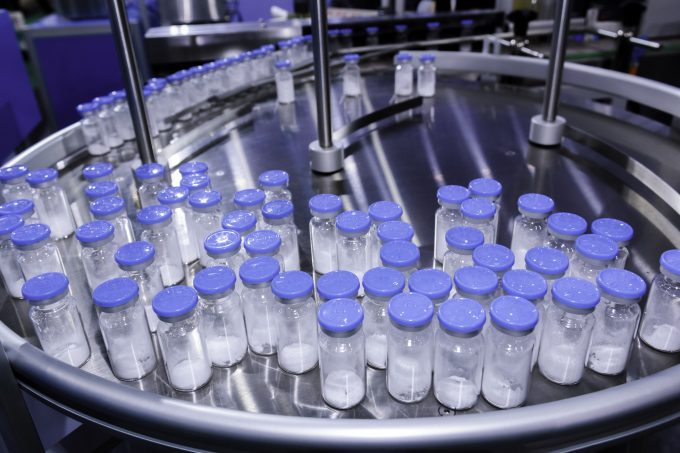Airports must get creative as surging ecommerce threatens to engulf capacity
Airport infrastructure and aircraft capacity are not expanding fast enough to keep up with demand, ...
UPS: MULTI-MILLION PENALTY FOR UNFAIR EARNINGS DISCLOSUREWTC: PUNISHEDVW: UNDER PRESSUREKNIN: APAC LEADERSHIP WATCHZIM: TAKING PROFITPEP: MINOR HOLDINGS CONSOLIDATIONDHL: GREEN DEALBA: WIND OF CHANGEMAERSK: BULLISH CALLXPO: HEDGE FUNDS ENGINEF: CHOPPING BOARDWTC: NEW RECORDZIM: BALANCE SHEET IN CHECKZIM: SURGING
UPS: MULTI-MILLION PENALTY FOR UNFAIR EARNINGS DISCLOSUREWTC: PUNISHEDVW: UNDER PRESSUREKNIN: APAC LEADERSHIP WATCHZIM: TAKING PROFITPEP: MINOR HOLDINGS CONSOLIDATIONDHL: GREEN DEALBA: WIND OF CHANGEMAERSK: BULLISH CALLXPO: HEDGE FUNDS ENGINEF: CHOPPING BOARDWTC: NEW RECORDZIM: BALANCE SHEET IN CHECKZIM: SURGING

Shippers are urging forwarders and carriers to be more proactive and apply ecommerce’s “quick milestone mentality” to pharma supply chains.
Head of logistics for Early Health Group, Yulia Celetaria, told The Loadstar pharma shippers were still lacking the “critical elements” of traceability and visibility, especially when delivering products to remote areas.
This often comes down to two points – IT systems and the data put into them.
“When something is happening – flight cancellations, custom systems outages, strikes, extreme weather – if I’m informed, I can react and give instructions what to do next. If I’m not getting this kind of information, then even the best IT systems do not really help,” she said.
“It’s not the question of just the IT system, it’s the question of how you speak to the IT system… Proactive versus reactive. Communication needs to be flowing all the time. For me, this is a crucial point.”
And she noted that “being without visibility of what is happening with a product” was her “biggest frustration” in the supply chain.
“It should not be the case where I have to chase the airline to check where my product is,” she added. “Often, the only way for me to have a little bit of an understanding of my product is the data logger that is placed inside it. But I only have the chance to retrieve the data once the product is delivered. Before that, I’m sometimes a little bit blind.”
But Ms Celetaria told The Loadstar this “proactive approach” needed to be paired with an up-to-scratch IT system to maximise the benefit.
“Sometimes the ‘control tower’ is not really a digital solution. It’s more like human communication. They call each other, they still use Excel spreadsheets to input the information, and I think that kind of cancels-out the proactive approach.
“So, I think there’s this combination of communication plus IT systems,” she emphasised.
Ms Celetaria suggested there needed to be “cross-industry education”, when it comes to the type of visibility pharma shippers want – “primarily on the airport side”.
She said: “The pharma industry can learn a lot from ecommerce, because ecommerce is all about these quick milestones. You know where your Amazon package is. I think we are missing this kind of visibility.
“For example, what happens once the product is offloaded from the aircraft? It goes to the tarmac, then the warehouse. How much time does it spend on the tarmac? Because if your pharma product is sitting there for maybe three hours, you could lose it if you didn’t use very expensive, robust, thermal packaging.”
Ms Celetaria noted that the “supply chain ecosystem” currently consisted of “weaker elements and stronger elements”, and added: “I’m not saying that all airlines are like this, because there are fantastic examples on the market, obviously.”
But she explained that when she shipped to a remote area, “I cannot always use the wonderful airports and wonderful airlines”.
“I need to go with what is available, but sometimes I know that the airline probably does not have enough capabilities on the airport side.
“Dubai’s a fantastic airport, Frankfurt, Singapore, all are quite fantastic airports, they know how to handle pharma and have been doing it for years, but you’re not always using these airports,” she explained.
Certain airports in Asia-Pacific, Africa and Latin America can often present struggles, according to Ms Celetaria. However, she added that she “cannot only blame the airlines, airports or freight forwarders, but also the customs regulations”.
“Some airports have very, very strict customs and it can cause a bit of a delay,” she said, and noted that it could sometimes take 48-72 hours to get clearance at some airports – “especially in Latin America”.
She said: “We try to pre-calculate that maybe 72 hours will be added to the transportation time because of potential customs complications.”
Comment on this article